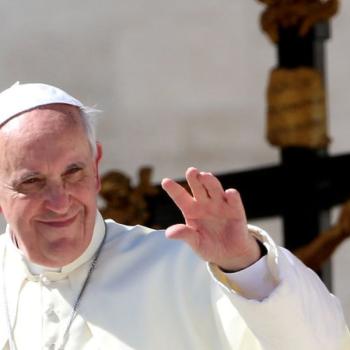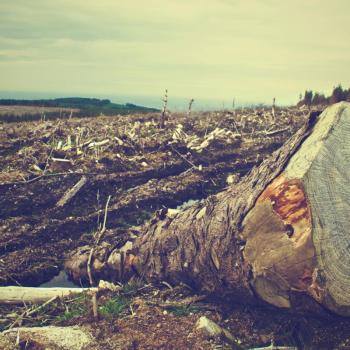EcoAmerica is holding its month-long American Climate Leadership Summit [register here] during Thursdays in August. I was asked to join the Blessed Tomorrow panel with Rev. Michael Malcolm and Rev. Dr. John Dorhauer to talk about this year’s theme, “Ambition, Restoration, Justice,” as it pertains to the church and climate. This is my call to denominational leaders of Christian churches in the United States to demonstrate climate ambition, work to restore God’s Creation, and spearhead justice for God’s people.

Dear Denominational Leaders of U.S. Churches:
As an environmental and climate activist for more than 15 years, I have seen encouraging grassroots efforts sprouting up across the landscape of U.S. Christian churches. Galvanized by the need to address climate change, ecological destruction, and environmental racism, individual Christians and whole houses of worship have responded. They’ve joined climate marches and planted trees. They’ve advocated for environmental protection and petitioned their elected leaders. Some have pushed for divesting their denomination’s investment portfolios from the fossil fuel industry. Others have put solar panels on their roofs or supplied drinking water to families suffering from fracking or lead-tainted pipes. This is just a sampling of the many ways in which houses of worship are stepping up.
What we need now is climate ambition and a commitment to ecological justice from you, our denominational leaders.
Grassroots ecotheology needs support from bishops, regional ministers, moderators, and presidents to develop comprehensive plans for establishing environmental goals and following through with measurable action.
This is not to say that denominational leaders have not supported the church’s care of Creation. Many have established policy offices, created teams to tackle the climate crisis and other ecological issues, and directed social statements to address environmental injustice.
While these efforts helped awaken the church to address care of Creation issues, frankly, it has not been enough.
I say this as Arctic ice continues to melt, catastrophic storms increase in number and intensity, wildfires continue to rage, drinkable water continues to dwindle, and species are dying out at alarming rates. The Church has a moral responsibility to do its part for climate ambition, restoration of God’s Creation, and justice for the oppressed.
Climate action in the church cannot just be grassroots. It also has to come from the treetops where leaders like you have a vantage point to see the larger landscape and issue a clarion call for their denominations to respond with measurable action.
What would climate ambition look like at the highest levels of denominational leadership?

Religious climate activist Jim Antal challenges leaders to devote 25% of their time, effort, and resources to addressing environmental issues. His essay, “Fighting Climate Change: Our Responsibility, Our Vocation, Our Salvation,” in Rooted and Rising: Voices of Courage in a Time of Climate Crisis, envisions climate ambition at scale. He imagines leaders saying, “’Because we are living on the hinge of history, I need to devote 25 percent of my leadership to combat climate change.’ What if university presidents formed a coalition to commit at least 25 percent of their curriculum to amplify their student’s understanding of climate change and their vocational commitment to restoring Creation?”
25% for climate ambition, restoration, and justice
Building on Antal’s suggestion, what if denominational leaders like you challenged their churches to reduce their energy consumption by 25%? Take your well-honed skills in running fundraising campaigns and dedicate them to carbon-reduction campaigns. Set targets for each congregation to “take a step down in faith” – reducing energy consumption and reconnecting with an Earth-honoring faith.
Begin with a “Creation Tithe”

As a first step, start with 10%, the biblically-authorized tithe. Make it a friendly competition among churches to see who can meet and exceed the goal. Suggest things like “Tithe Your Drive” in which congregants reduce their driving by 10% each week. And “Tithe Your Land” – dedicate 10% of the church property to restoration efforts such as tree-planting, butterfly or rain gardens. And “Tithe Your Energy”! Partner with energy auditors to visit every congregation in your region to establish an energy baseline and make a plan for reducing energy use by 10%. Then track the reductions so people can be accountable and eventually celebrate their efforts.
Stage two: “Double Tithe”
The next stage would be the “double tithe” – 20%. These would be larger-scale efforts such as switching to low-carb energy such as solar, wind, or geothermal. Removing meat from 20% of the church meals such as potlucks. Dedicating 20% of benevolent funds (beyond denominational support, of course) to local ecological restoration efforts such as waterway clean-ups. And allotting 20% of Christian education to learn about environmental racism and how the church can advocate with their siblings of color for ecological justice.
Stage three: “Strive for Five”
The final stage would be “Strive for Five” – that last 5% to get the churches to the 25% goal. Maybe it’s getting 5% of the church membership to sign up for a clean energy co-operative. Or dedicating 5% of the benevolent fund to a church in an under-resourced area to help them meet one of their climate-ambition goals.
With just a bit of creative visioning and a commitment of 25% of your own time and effort, there are countless ways to align climate ambition with the ministry your denomination.
Because here’s the thing. We need your voice, your leadership, and your willingness to model Creation care and climate ambition for the denominations you serve. Dedicating your time and denominational resources to the Great Work of protecting God’s Creation and the people God loves is prudent, ethical, and desperately needed.
Certainly, such efforts will save congregations money, but that’s not the reason to do this work.
The reason for committing to restoration, justice, and climate ambition is theological.
God created this world and called it “very good” (Genesis 1:31).
The Holy Spirit moves and breathes through the air of this planet (Genesis 1:2).
Jesus calls for justice for “the least of these” (Matthew 25:40).
With support from you, our denominational leaders, the grassroots and the treetops can be united into a forest of faith communities doing their part and modeling climate ambition, restoration and justice!
Check out these resources from ecoAmerica and Blessed Tomorrow for talking points and actions steps about climate and the church:
How Faith Communities Lead Social Movements
And lots more resources at Blessed Tomorrow!

Leah D. Schade is the Assistant Professor of Preaching and Worship at Lexington Theological Seminary in Kentucky and ordained in the ELCA. Dr. Schade does not speak for LTS or the ELCA; her opinions are her own. She is the author of Preaching in the Purple Zone: Ministry in the Red-Blue Divide (Rowman & Littlefield, 2019) and Creation-Crisis Preaching: Ecology, Theology, and the Pulpit (Chalice Press, 2015). She is also the co-editor of Rooted and Rising: Voices of Courage in a Time of Climate Crisis (Rowman & Littlefield, 2019).
Twitter: @LeahSchade
Facebook: https://www.facebook.com/LeahDSchade/
Read also:
Race, Faith, and the Climate Movement: Interview with Rev. Lennox Yearwood, Jr.
Churches Can Connect Faith and Creation Care for Lent
Noah’s Ark and Climate Change: What Kind of Church Will We Be?













